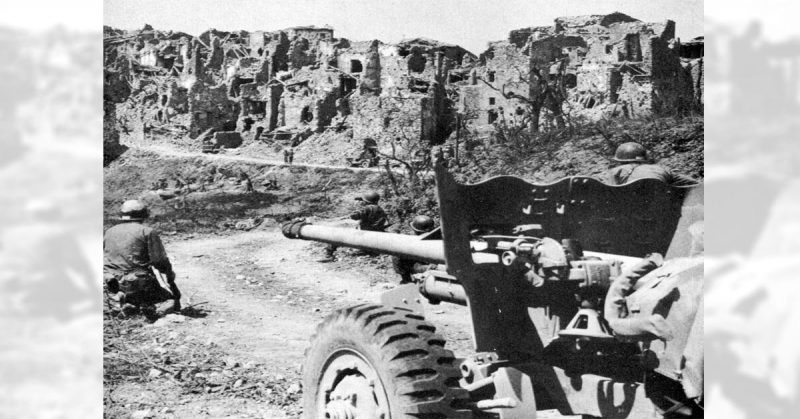The main fixture of these nearly insurmountable defenses that General Sir Harold Alexander, Commander-in-Chief of the Allied Armies in Italy threw the bulk of his troops towards was at Monte Cassino. Atop a disparagingly steep mountain, hundreds of meters above the town of Cassino and dominating the entrances to the Liri and Rapido valleys, sits the abbey of Monte Cassino, founded in 526 AD.
This position, and the numerous other dug in, hilltop German positions around it, had to be taken. To the Northeast, though the British had broken through the Gustav line at the coastal city of Ortona, bad winter weather, rugged terrain, and more German defenses caused the advance to Rome from that direction to be abandoned. Though Highway 7 ran up the West coast straight to Rome, it went through the Pontine Marshes, which the Germans flooded.
The only road left to reach Rome was Highway 6, which ran straight through the Liri Valley and was one of the most strongly and strategically defended points in Europe.
Alexander’s mission was to draw as much of Germany’s forces to this area of the Gustav line as he could, in preparation for the huge assault being prepared for Normandy on D-Day. Though it cost the lives of over 55,000 troops, the strategy worked. The attrition of German troops through the months of fighting had Field Marshal Albert Kesselring, the German Commander-in-Chief in Italy, continuously sending in more troops to reinforce the positions, losing 20,000 by the end of the long battle.
The battle of Monte Cassino happened in four major phases, the Allies finally overrunning the Liri valley, the mountains and hills around it, and ancient abbey. It lasted from January 17th, until May 18. Rome was captured less than a month later, just two days before D-Day.
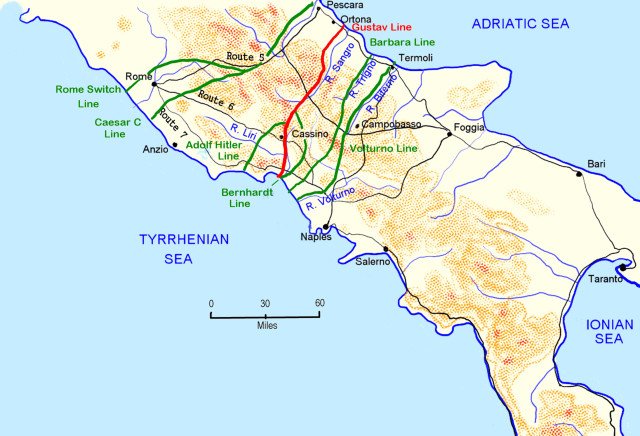
Interestingly enough, though the battle was named after the abbey and the abbey was both well positioned to see almost any Allied advance and built strong enough to fend off the same, Kesselring had not positioned any troops there. He did this for the same reason he put defensive lines North and South of Rome but didn’t wish to battle in the city. He was very attached to the idea of preserving antiquity and didn’t think the ancient monastery should be part of the fighting.
For almost all of 1944 prior to the D-Day landings on June 6th, the Allied force moving up the Western side of the Italian peninsula fought to break the German position held on the Gustav line. This line was an exceedingly well-prepared series of defensive points running from the Tyrrhenian Sea to the Adriatic Sea at the Southern reach of Italy’s central mountains.
Two German officers, Captain Maximilian Becker and Lieutenant Colonel Julius Schlegel, had, by November 1943, proposed and seen to the removal of precious manuscripts, artifacts, and art from the monastery. It took three weeks and over 100 truck loads, but, working with the Vatican, they managed to remove all the old treasures from harms way, moving most of them to the Vatican and Castel Sant’Angelo, also run by the Roman Catholic Church.
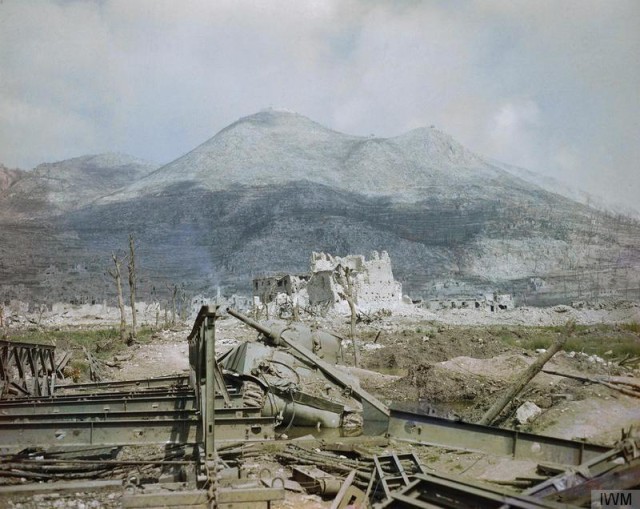
Despite no German position in the abbey (they were entrenched in the hillside directly around it), many Allied officers were convinced they must have been in there, due to the German’s highly accurate artillery strikes. The Abbey did, after all, offer the perfect view of and stronghold in the whole area.
After the disastrous first battle, trying to take ground from the German’s in the rough terrain and the town below, the 34th Division of the U.S. II Corps alone losing 2,200 men (80% of their comrades), the decision was made to destroy the abbey. On February 15th, 1944, 142 Boeing B-17 Flying Fortress heavy bombers and 47 North American B-25 Mitchell and 40 Martin B-26 Marauder medium bombers dropped 1,150 tons of explosives and reduced the abbey to rubble.
The only people in the monastery at the time of the bombings were monks and Italian citizen seeking refuge. Two hundred and thirty people were killed and the Vatican was outraged.
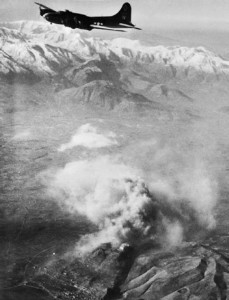
Furthermore, with preserving the antiquity of the place already out of the question, the German troops occupied the ruins and made an, even more, formidable position.
Much of this very long struggle can be summed up by a series of Allied pushes being halted, turned, back or cut-off by the massive obstacle that was the German positions on such rugged, easily defended terrain and in winter and rainy spring conditions. Indeed, it was really only through hammering the German divisions, again and again, sacrificing tens of thousands of troops; the Allies were able to break through. This, finally, happened when they had built up their attacking forces for several weeks, undetected, surprising the Germans with a far more massive force than they expected.
The entirely of the months-long battle was a monumental effort. The Allied force was comprised of troops from the U.S., Canada, Britain, New Zealand, Australia, Morocco, South Africa, Poland, Italy, India, Nepal, and others. All suffered great losses. Many of these nations, as well as Germany, have cemeteries and memorials to the fallen around Monte Cassino.
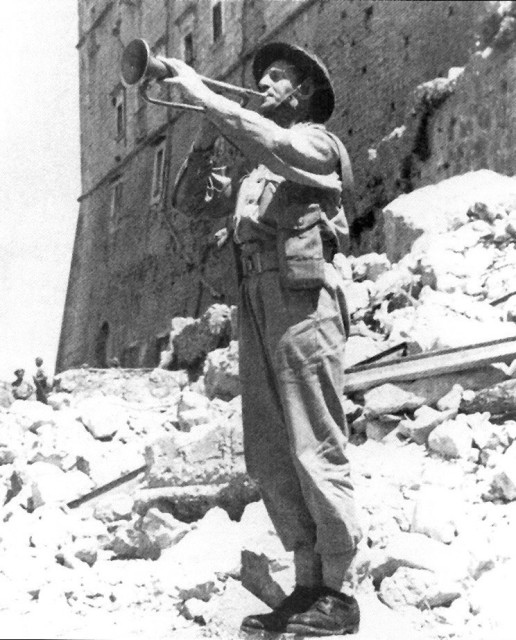
The Polish troops were the first to take the abbey on Monte Cassino on May 18th. The Germans, their supply lines threatened as the Liri valley was overrun, had retreated under cover of darkness the previous night.
The valley had been taken in large part do to the effort of Moroccan troops in the French Expeditionary Corps. They were called Goumiers and specialized in mountain warfare. On May 14th, they traveled through areas on the West side of the Liri valley the Germans had left undefended because they thought it impossible to move through. They assisted the British XIII Corps fighting up the Liri valley below and flanked the German position.
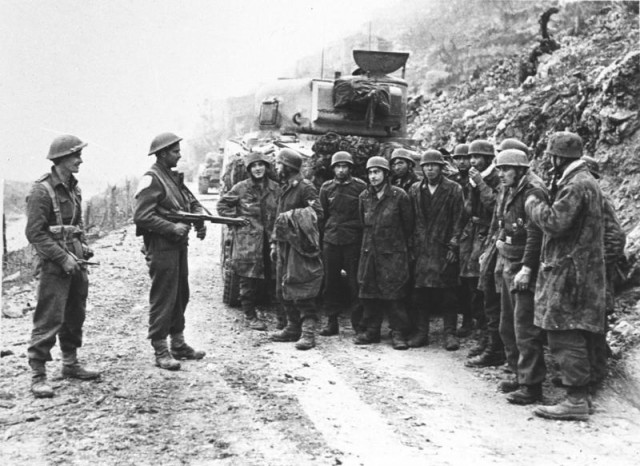
Tragically, these same troops, after they broke though the German line that day in May, moved through the Italian countryside killing and raping citizen. Reports of these horrific events claim that 800 men were killed defending their families and neighbors and more than 7,000 women, and children were raped.
In truth, the only indicator for a victory in this battle was that the Gustav line fell. In the battle of Monte Cassino and the subsequent fight for Rome in the following weeks, the Allies lost over 100,000 men. Kesselring knew from the beginning of the Allied invasion of Italy that his fight would, at best, be a slow, agonizing withdrawal. By the end of the Italian campaign, the Germans had lost almost 250,000 troops killed, missing or captured and the Allies had well over 330,000 casualties.
By Colin Fraser for War History Online
